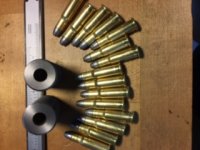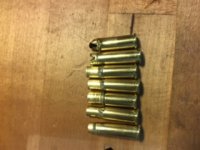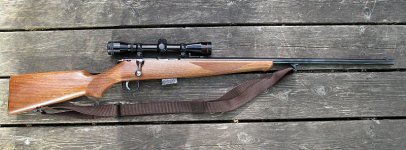A couple of years ago I purchased a Savage 23 in 25-20. Brass was difficult to find so I initially made brass by fire forming 218 Bee brass, this worked very well, I formed 50 pieces and did not lose a single case.
I read on the web that it was easy to form 25-20 from 32-20, several people were able to do this by just running the 32-20 case into a 25-20 full length die. This was not my experience. I tried this but destroyed a couple of cases.
Long story short it was necessary to do this in 3 steps. I measured the neck diameter of both cases divided the difference by 3 and made 2 reduction dies to gradually reduce the neck diameter. Final forming was done in the 25-20 full length die.
218 Bee brass is now readily available so I would recommend fire forming to anyone that needs to do this
I read on the web that it was easy to form 25-20 from 32-20, several people were able to do this by just running the 32-20 case into a 25-20 full length die. This was not my experience. I tried this but destroyed a couple of cases.
Long story short it was necessary to do this in 3 steps. I measured the neck diameter of both cases divided the difference by 3 and made 2 reduction dies to gradually reduce the neck diameter. Final forming was done in the 25-20 full length die.
218 Bee brass is now readily available so I would recommend fire forming to anyone that needs to do this



